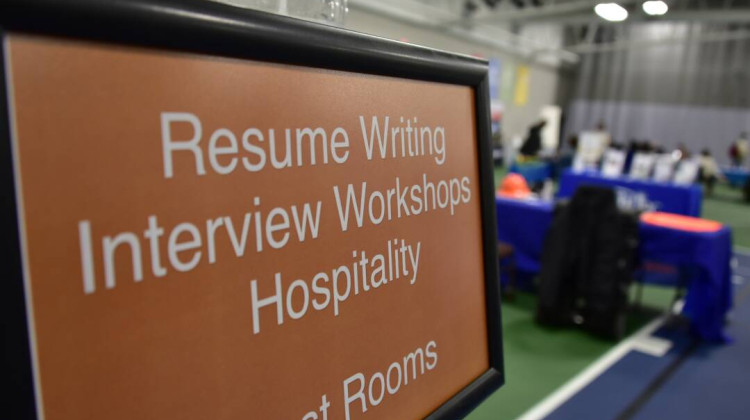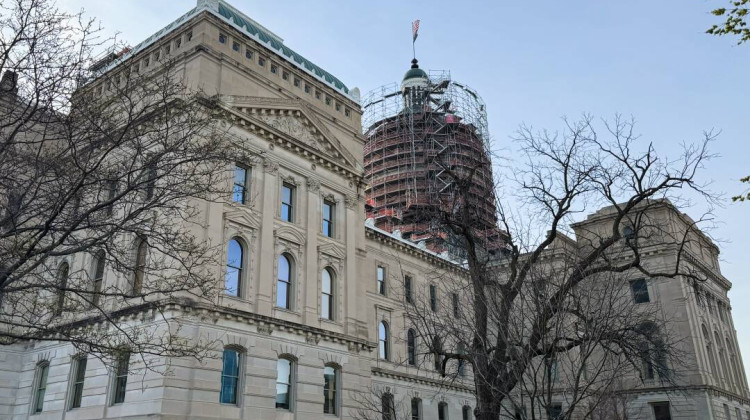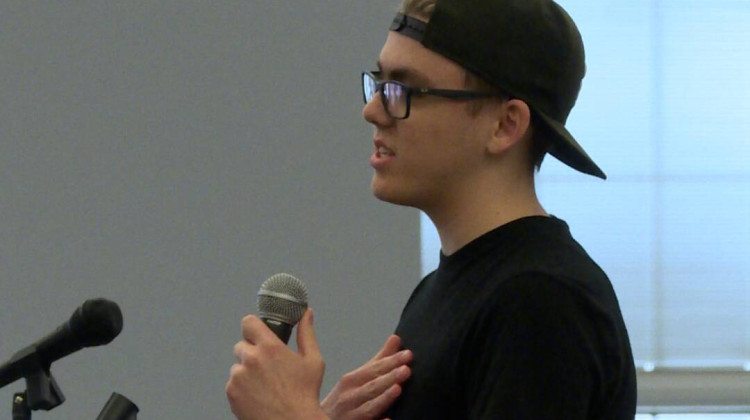
Experts say these numbers aren't great at telling whether the state and nation are barreling toward a full-blown recession or a much smaller economic road bump.
Adam Yahya Rayes/IPB NewsNew federal job market estimates show Indiana's tight labor market didn't really change significantly in December 2022.
Indiana's unemployment rate increased by a fraction to 3.1 percent in December, according to Bureau of Labor Statistics preliminary estimates released Tuesday. While the month-over-month increase is minor, it is a significant change from the state’s 2.2 percent unemployment rate in March 2022.
Still, December’s rate is below the national average of 3.5 percent and near historic lows for the state – as has been the case for the rest of 2022.
Other key data points barely changed at all or remained exactly the same. The BLS releases this unemployment data one month after the fact as a preliminary estimate that can be adjusted up or down the following month as a final estimate.
The rate of working-age people actively working or seeking work in Indiana has remained stagnant at 63.2 percent. That’s marginally lower than it was in July 2022 but still a meaningful increase above the 61.9 rate the state began 2022 with.
Experts say the labor participation rate could be positively tied to rising unemployment. To be considered among the unemployed in this data, people have to be actively seeking work. That means both those who have lost work and those who were entirely out of the labor force but are now actively seeking jobs count toward the state’s rate.
Going into 2023, there's a lot more uncertainty. Experts say these numbers aren't great at telling whether the state and nation are barreling toward a full-blown recession or a much smaller economic road bump.
READ MORE: Economic uncertainty looms despite Indiana's 'red hot' job market heading into 2023
Join the conversation and sign up for the Indiana Two-Way. Text "Indiana" to 73224. Your comments and questions in response to our weekly text help us find the answers you need on statewide issues throughout the legislative session. And follow along with our bill tracker.
Either way, it appears for now there are still a lot of companies posting jobs for a limited number of job seekers.
Experts say one cause of that could be a lack of access to affordable child care in Indiana. Bill Konyha is the president and CEO of the Regional Chamber of Northeast Indiana.
“Employers throughout northeast Indiana and I suspect the state, according to what I'm told, have taken extraordinary measures to try to find and recruit replacements for these jobs,” Konyha said. “A lot of the jobs are vacant because people left them during COVID and have not returned. Others just simply are unfilled because there are people who are otherwise work-willing, but can't afford childhood care or early childhood education.”
On Monday, Konyha made a case to state lawmakers in the Senate Family and Children Services Committee to pass a bill that would fund a pilot program splitting child care costs between eligible families, employers and the state to bring more parents back into the workforce. Each party would pay a third of the cost.
“Suffice it to say that in northeast Indiana, we have determined that there are 8,987 work-willing parents,” Konyha said, referencing estimates created for the chamber by Indianapolis-based consulting firm Thomas P. Miller & Associates.
Senate Bill 368 proposes appropriating $11.5 million over two years to implement this pilot program in northeast Indiana, with the goal of eventually expanding it statewide. Some senators on the committee asked if it would be better to broaden the pilot program to get data from a wider swath of communities.
“I personally have no objection to an amendment changing it to a statewide program, provided you understand that it's going to cost a lot more than $22 million,” Konyha said.
The committee ultimately decided to hold off on voting on the bill until some language is added creating accountability measures to ensure funds are being used properly and outcomes are tracked.
There are several other bills in the Statehouse aimed at addressing child care needs this session, including SB 186, which would give employers a tax credit for funding care, and HB 1393, which would increase the income threshold for families to access grant funds through the state’s existing On My Way Pre-K program.
Contact reporter Adam at arayes@wvpe.org or follow him on Twitter at @arayesIPB.
9(MDAyMzk1MzA4MDE2MjY3OTY1MjM5ZDJjYQ000))
 DONATE
DONATE






 Support WFYI. We can't do it without you.
Support WFYI. We can't do it without you.